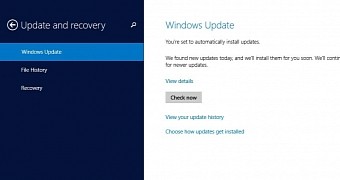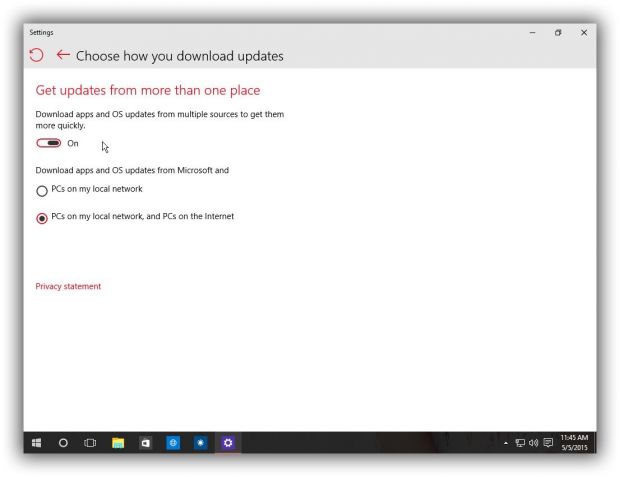Microsoft presented Windows Update for Business at the Ignite conference in Chicago, revealing yet another update system that will be part of Windows 10 and that will try to make the updating process of phones, tablets, and PCs a little bit faster, easier, and more secure.
While Microsoft hasn’t yet provided detailed information on how exactly the new updating process of phones and PCs is going to work, the Windows as a Service approach provides several clues about it, especially because the existing technical preview builds do bring a few improvements in this regard.
Updates when they’re ready
First and foremost, security updates and improvements will be delivered to devices as soon as they’re ready. This means that you won’t have to wait months to get a specific pack of features on your device, and Microsoft says that this should help keep everyone fully up to date with the latest goodies completed by the development teams.
The company points out that right now there are 850 million Windows devices that are being updated through Windows Update, so updating them as fast as possible is undoubtedly a priority.
“With Windows 10, Windows Update will also be regularly delivering ongoing Windows innovation in addition to security updates,” Microsoft adds.
Full control for businesses
Windows Update for Business will allow companies to configure distribution rings and decide which updates will be delivered in which wave. Basically, phones can be updated first, then PCs, or in any order each enterprise decides.
There will also be maintenance windows and integration with existing tools, so IT professionals will be allowed to choose when and what updates they want to install on their computers and phones.
Peer-to-peer transfer
One of the biggest improvements that Microsoft is making in Windows 10 is the addition of the peer-to-peer update system, which means that new updates would be delivered from one PC to another in your organization, without the need to connect to Redmond’s servers every time.
This feature plays a double role. First, it makes it easier for companies to install updates on their devices because transfer rate would be greatly improved. Secondly, it reduces the stress on Microsoft servers, thus leading to speed improvements for those who are still getting updates from the company directly.
Windows as a Service
Windows 10 is expected to be the very last stand-alone Windows release, so future updates would be delivered exactly when they are ready. This means that Microsoft could move from a full release every three years to a yearly cycle that would bring major updates every 12 months and smaller improvements when they are completed.
Windows as a Service is clearly Microsoft’s new direction, and this should help the company keep its devices fully updated at any given time. As the company itself said at Ignite, that’s the difference between Microsoft and Google.
“This level of commitment and support is far different than Android, for example, where Google refuses to take responsibility for updating their customers’ devices, leaving end-users and business increasingly exposed every day they use the device.”

 14 DAY TRIAL //
14 DAY TRIAL // 

